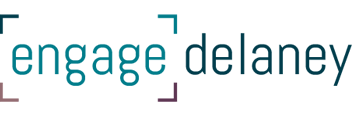Out with the old! Cracking the code on stellar engagement planning
by Richard Delaney, President, Delaney, the engagement people
It’s an exciting time for engagement worldwide. The international organization that stewards the practice – IAP2 – is going through some major changes that will transform it into the organization the world needs, to help heal our ailing democracies.
For my part, I’m helping IAP2 to transform their antiquated engagement planning model into a more balanced and community-oriented process. Let’s take a look at what is typically referred to as stakeholder mapping. Stakeholder mapping is the process to identify the parties who should be brought into the engagement process. It is currently incredibly flawed and could even be the cause of engagements that go sideways. Big changes need to be made. If you make the following two changes in your practice, I guarantee you’ll see immediate improvements.
- From “Issues” Identification to “Impact” Analysis
The current model suggests you identify “issues” relating to the pending decision. This is a dis-service to the decision and the decision-making organization. By identifying only “issues” – that is the things people don’t like about the pending decision – we will only identify within the stakeholder-mapping process those groups or individuals who are, or perceive themselves to be, negatively impacted. We are creating a choir of opposition. Not good.
Let’s face it – most public and private decision-making organizations make decisions in support of the public good; sometimes, a small minority of those impacted are actually, or perceive themselves to be, negatively affected. Think, as an example, of expropriating private lands to make way for a community hospital. Why then would we only identify and engage those who are negatively impacted? Hardly a recipe for a balanced conversation but a really good way to wring all the good out of public policy.
Solution: Don’t identify “issues”; in fact, eliminate that word from your engagement vocabulary. Instead identify “impacts” as part of the stakeholder-mapping process. (BTW – “stakeholder” is another word we need to eliminate, but that’s a blog for another day) After you’ve clarified the decision statement (a.k.a. project scope), set out to identify both negative and positive impacts and quantify them as high, medium, low, benign or unknown. We refer to this as the polarity and significance of decision impacts. When you start using this process, you’ll most likely see the decisions you engage on create many more positive than negative impacts and you’ll be able to quickly see:
- The supporters you need to recruit
- The impacts balance sheet for those who perceive themselves to be negatively impacted
- The overall decision impacts balance sheet as a basis for communications planning
Also, keep in mind that when you assess an impact as “unknown”, it gets ranked as “H-”. This is demonstration of the precautionary principle.
- Impact Analysis: It’s Really Risk Management Through Stakeholder Mapping
Stakeholder mapping through impact analysis is truly an exercise in change and risk management. The problem within an engagement context is that since we usually do impact analysis to identify risks or resistance to change, we are conditioned to focus mostly on the negative. Great to marshal communications and engagement resources early in the decision-making process if your only intention is a defensive one. But engagement is a commitment to proactive management. As noted above we need to start looking for both concerns and opportunities and we do it deliberately.
Solution: Just as engagement planning is an exercise in critical thinking, impact analysis is also a team sport. It needs several different perspectives to generate ideas and challenge and refine them. The structure of this refinement process is important. Structured impact analysis is a natural group thinking process that starts with “intended” or “direct” impacts. These will be mostly positive and significant. After you’ve got a good start on that list, the group turns its attention to “indirect” impacts. Again, these will be mostly positive, but some negative ones start to creep in. Continue to get consensus from the engagement planning team on both the polarity and significance after you’ve brainstormed this part of the list. Then, naturally, the group will start to see “unintended” impacts. These come into focus as the group sees the potential course of events as direct and indirect impacts take place.
In my training and in consulting projects, I ask the planning group to brainstorm “interested and affected parties” once we’ve come to ground on a decision scope. We then set this work aside and conduct a structured impact analysis process. In every single case, it doesn’t take long before we identify new parties – parties who are unintendedly impacted. At the end of the day, it really doesn’t matter whether you characterize an impact as indirect or unintended, just so long as you identify it.
There are a few other changes that need to be made to the IAP2 planning process, what I refer to as the world-wide standard for authentic engagement planning, but if you include just these two changes, you’ll see a huge difference in the parties with whom you engage and the results you achieve. If you’d like worksheets to support this approach to impact analysis in support of fulsome stakeholder mapping, simply drop me a line…happy to help.




